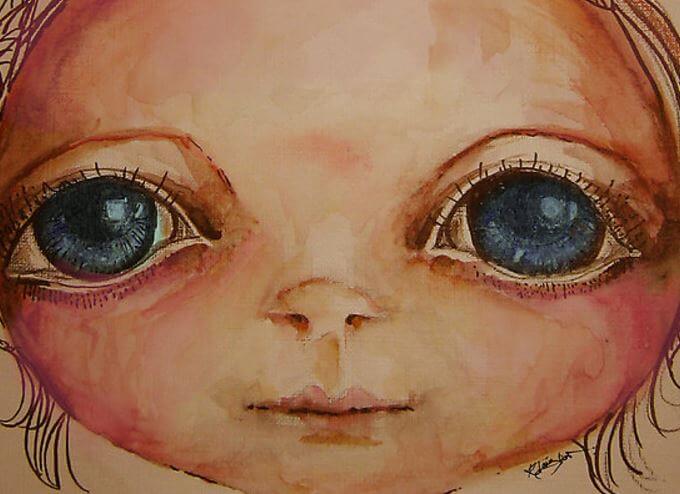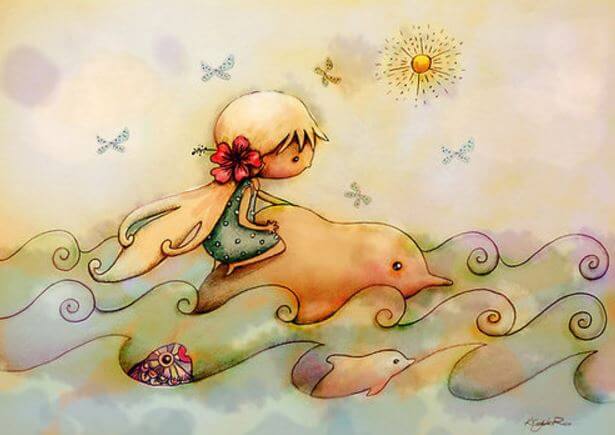Never Say "Don't Cry" to a Child

When we want to soothe an upset child after a fall or a temper tantrum, we usually say things like “don’t cry,” “be brave,” “men don’t cry,” “do you think crying will solve anything?”
But do we ever stop to think about what these phrases actually achieve? Not only are we saying no to their behavior, we’re saying no to the child and their emotions. We’re teaching them to repress their emotions instead of expressing them, and that has serious implications for their development, as well as the development of society in general.
It’s not surprising that we raise them this way, because we’re reproducing the message that most of us have received. The same is true when we say these things to adults. Why shouldn’t we cry if something hurts? Crying is a natural coping mechanism that should be taken advantage of.

If we want our children to understand their emotions and learn to manage them, we should remove certain phrases from our speech and certain habits from our behavior that set an example for them. We have to fight our habit of repressing our thoughts, emotions, and behaviors.
–Let them go, Lucía – said the grandmother.
-Who?
-Your tears! Sometimes it seems like there are so many that you feel like you’re going to drown in them, but that isn’t true.
-Do you think one day they’ll stop falling?
-Of course! – the grandmother responded with a kind smile. – Tears don’t stay for too long. They do their job and then move along.
-And what’s their job?
-They’re water, Lucía! They clean and clear things up…just like the rain. Everything looks different after it rains.
–Excerpt from The Rain Knows Why by María Fernanda Heredia–

When we give children love, their fears disappear
If we help them identify why they’re crying and channel their emotions, this will improve their emotional regulation abilities.
Fortunately, nature is wise and has fought against the prevailing educational model to make sadness the most empathetic emotion. The brain is predisposed to pay attention to sadness, empathize with it, and comfort the person who feels it.
Years of education with an incorrect model has caused us to repress negative yet healthy emotions and validate only the most subdued version of ourselves.
We should teach children that sadness has many causes, that it’s a natural response to something being upset, and that it can be channeled. We should provide them with the proper models of self-regulation and promote their ability to reflect on what sadness and discomfort can do for us.
When we teach children to repress their emotions by saying things like “don’t cry,” we’re promoting coping strategies based on fear and denial. But feeling negative and annoying emotions is completely normal.
On top of understanding our children, we have an obligation to help them feel better and end the cycle. It’s important to note that the origin of crying is usually some sort of annoyance, and therefore, we have to fight against the expectation that we shouldn’t allow temper tantrums.
Temper tantrums are frequent in children, especially between the ages of 2 and 6, which means they’re also important. They shouldn’t be dismissed; rather, their duration and purpose should be taken into consideration.

When temper tantrums happen, we can get mad, but it’s essential that our words convey the message that we’re saying yes to the child and their feelings, and no to the bad behavior. We can validate their emotions and feelings by adapting to the child’s developmental level and facilitating introspection.
Emotions don’t occur in a vacuum; they’re quite complex. For example, we should teach children that being sad isn’t incompatible with being angry or embarrassed. They’ll slowly start to internalize this as they mature and develop more flexible thought patterns.
We’d like to conclude by saying that whatever the origin of crying is, if we encourage them to analyze and put words to their feelings, we can facilitate regulation and reflection when their thoughts are disorganized and they can’t handle them properly.
Illustrations by Karin Taylor
Recommended reading: No-Drama Discipline by Daniel J. Siegel and Tina Payne Bryson
This text is provided for informational purposes only and does not replace consultation with a professional. If in doubt, consult your specialist.








